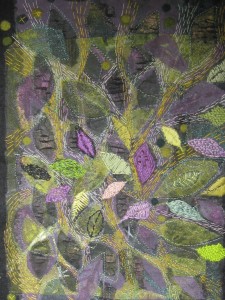 Yes it is just around the corner that either dreadful or delicious time of the year. For many the holiday preps are a chore, stressful and too often expensive. For those who thrive on routine and regularity, the inevitable schedule change awakens anxiety. For some family reunions too often gone wrong is a source of many more headaches. Many want to get it over with as quickly as possible: too many family get togethers or too few; too much food or not enough; a proliferation of gifts, often unnapreciated and many times useless because given just to give, or on the flip side very few...
Yes it is just around the corner that either dreadful or delicious time of the year. For many the holiday preps are a chore, stressful and too often expensive. For those who thrive on routine and regularity, the inevitable schedule change awakens anxiety. For some family reunions too often gone wrong is a source of many more headaches. Many want to get it over with as quickly as possible: too many family get togethers or too few; too much food or not enough; a proliferation of gifts, often unnapreciated and many times useless because given just to give, or on the flip side very few...
DIY Christmas, some reasons why
Mes créations-update
J’ai promis de tenir le lectorat au courant de mes avancées créatives. Voici une broderie techniques mixtes que j’ai fait sur fond de feutrine noire. J’avais des retailles d’organza que je me suis amusée à découper au fer chaud (pyrogravure ou stencil) en faisant des ouvertures en formes de petites feuilles. Chacune des trois couleurs d’organza a été superposée et collée à la feutrine avec de l’entoilage thermocollant wonder under et un fer chaud (protéger la surface avec une feuille de papier parchemin ou de papier siliconé) avant que le tout...
Idée : sacs de plastique réinventés
Une nouvelle technique à ajouter à votre coffre à outils créatif.
Aujourd’hui nous allons nous réapproprier certaines matières recyclables: les sacs de plastiques. Si vous êtes une citoyenne avisée, tout ce dont vous avez besoin se trouve dans votre bac de recyclage.
Vous aurez besoin:
- des sacs de type Wallmart, LaBaie, RénoDépot (plastique mince et propres évidemment)
- deux feuilles de papier à photocopie assez grandes (papier photocopie, kraft, etc)
- OU le papier parchemin utilisé en cuisine est encore mieux (acheter à l’épicerie en rouleau)
- un fer à...
International art therapy
![Art Therapy Alliance and International Art Therapy Organization [IATO]](http://www.arttherapyalliance.org/fusionheader.jpg)
Find out what is going on art therapy wise around the world. Read the first issue of Fusion, the International Art Therapy Alliance’s e-zine publication.
Drawing to know
Milton Glaser a well known designer, speaks of drawing as consciousness: « a fundamental way of knowing the world ». I use observational drawing with some clients as a way to help them really see what is around them, to grasp what is actually there. Some fears, anxieties, eating disorders for example, stem in part from a distorted sense of reality. Training to really see is an exercise in correcting cognitive distortions, of realizing what we think at times is perhaps not an accurate assessment of what is actually there.
MILTON GLASER DRAWS & LECTURES from C. Coy on
Art theories and drawings
There are many ways of apprehending children’s art, many conceptual windows from which artwork can be viewed.
I re-read Betty Joe Troeger’s(1992) article : Application of child art theories to the interpretation of children’s art (in AT: JAATA). The paper is an overview of theories used to interpret children’s drawings. She lists nine influential theories informed by art education, psychoanalysis, gestalt, developmental and cognitive psychology. These are:
- naive realism (McFee, 1961);
- recapitulation (Kellogg, 1969) informed by Jung;
- personality (Clarke, 1979) informed by Freudian...
Types of art therapy in Britain
It is well known that there are many ways to practice art therapy, and there are important differences within and across countries. Britain in contrast to North America tends to privilege psychoanalytically informed approaches as you will see below. The excerpt is taken from a recent article by Susan Hogan, a prominent art therapist who writes on history and gender related issues in art therapy. It is intended as a overview of the field in Britain, not a critique, nor does it attempt to point out some of the contradictions across various approaches.
Hogan, S. (June 2009). The art therapy...
Tree as self symbol
Assessment procedures that use the tree as a symbol are the HTP: House, Tree, Person Test (Buck, 1948); TDT Tree Drawing Test (Koch, 1952); DDS: Diagnostic Drawing Series (Cohen 1985); PPAT Person Picking an Apple from a Tree (Gantt 1990); TTM Tree Theme Method (Alexi & Gunnarsson 1995).
A tree is often seen as a symbol of self, the form evocative of the human body, feet on the ground, trunk with arms reaching out. A tree experiences changes through the seasons, it ages and withers, growns and flourishes and thus makes it an ideal projective tool. Carl Jung...




